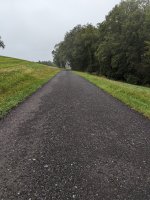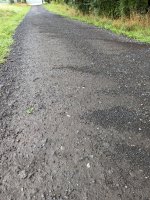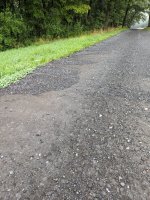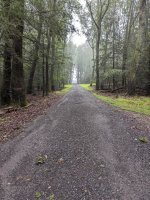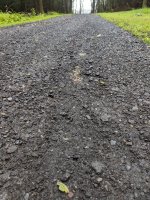MGH PA
Gold Member
About a year ago, I had rolled asphalt millings installed on my ~1/2 mile driveway. They were supposedly screened millings, and they were put in with a paver and rolled. Initially, they held up well. Over time, they have started to unbind and the top layer is a very fine material that gets tracked into our garage/house all of the time. Not to mention, we are having wash out events with some crazy heavy rains we have had this summer. The guy who installed them has been out and keeps recommending chip sealing or at the very least, fog sealing, but even he admits the latter won't help much with heavy rain events. The problem is that worst section is in the last 800' through the woods to the house (see photos). The excavator who built the road 4 years ago opted to no build up the rd and run pipe, but rather, rely on the heavy shale base, and natural topography to shed most of the water. This was never an issue when it was compact shale the first three years, but the millings can't handle the heavy water.
I'm on the fence as to what to do next. chip seal is too much $$, and fog sealing isn't going to address the issue. I had one excavator tell me I would be looking at $6-$7K to fix the 800' section (build up a crown, run a ditch down both sides with a pipe at the bottom). My gut tells me to fix this issue first, but it's a bit irritating to have the road torn back up after just putting that money down with the millings. At least if I had went with compacted sub base, I could work it up with a blade after these storms unlike the millings.
Thoughts?
I'm on the fence as to what to do next. chip seal is too much $$, and fog sealing isn't going to address the issue. I had one excavator tell me I would be looking at $6-$7K to fix the 800' section (build up a crown, run a ditch down both sides with a pipe at the bottom). My gut tells me to fix this issue first, but it's a bit irritating to have the road torn back up after just putting that money down with the millings. At least if I had went with compacted sub base, I could work it up with a blade after these storms unlike the millings.
Thoughts?
Attachments
Last edited:
